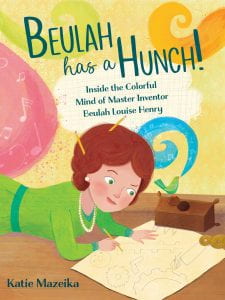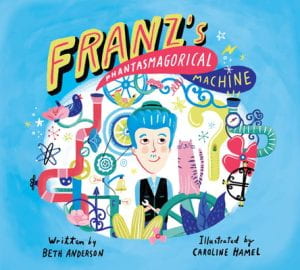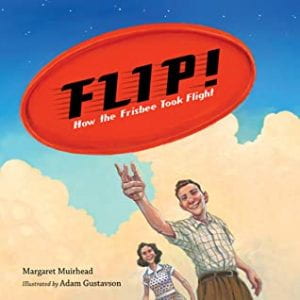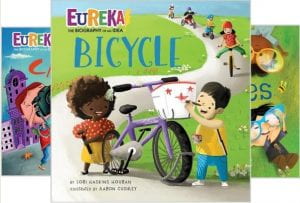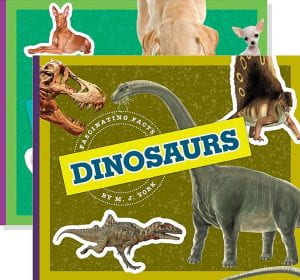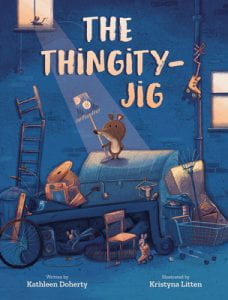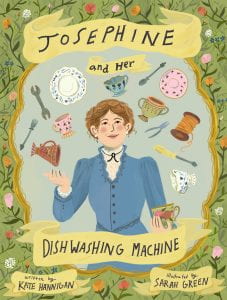 Hannigan, Kate. Josephine and Her Dishwashing Machine: Josephine Cochrane’s Bright Invention Makes a Big Splash. Illustrated by Sarah Green. Calkins Creek, 2023. 978-1-635-92621-7. Unpaged. $18.99. Grades 2-5.
Hannigan, Kate. Josephine and Her Dishwashing Machine: Josephine Cochrane’s Bright Invention Makes a Big Splash. Illustrated by Sarah Green. Calkins Creek, 2023. 978-1-635-92621-7. Unpaged. $18.99. Grades 2-5.
The late nineteenth century was a time of invention and change. What made those days even more exciting was the appearance of women inventors, like Josephine Garis Cochrane. Born in 1839, she lived in modest circumstances with her husband. One chore that she disliked was washing dishes by hand, because the dishes were easily chipped, the water got dirty, and it was time consuming. When her husband died, the widow was left with many debts. Josephine needed to pay her bills and began to brainstorm ideas about an automated way to clean dishes. Designing was in her blood, with a father who designed bridges and a great-grandfather who designed steamboats. After doing a lot of research, Cochrane set to work. She measured cups and plates to determine how big the machine should be and made a circular pipe to fit on the bottom to spray hot soapy water. Josephine worked with a mechanic called George, and together they fine-tuned the device until it worked perfectly. In 1886, the woman inventor was granted a patent for her machine, but now she needed investors to help finance its production. In those days, people were reluctant to support a woman in business. Undeterred, she decided to exhibit her dishwashing apparatus at the 1893 Chicago World’s Fair, where it was met with much acclaim and won the highest prize for the “best mechanical construction, durability and adaptation to its line of work.” Soon orders began pouring in and sales took off in hotels and restaurants. Always refining her invention, Josephine dreamed of seeing dishwashers in the home. The author includes puns about water in the text, making it an enjoyable read. The back matter includes an author’s note about Cochrane, a timeline of inventions from 1791-1946, a list of notable women inventors, and sources. The colorful digital illustrations by Green include design sketches and a copy of the first page of the original lithograph of the patent from 1886.
THOUGHTS: This is a wonderful book to include in STEM units or to use during Women’s History Month. Recommended for elementary collections.
Picture Book
Biography

